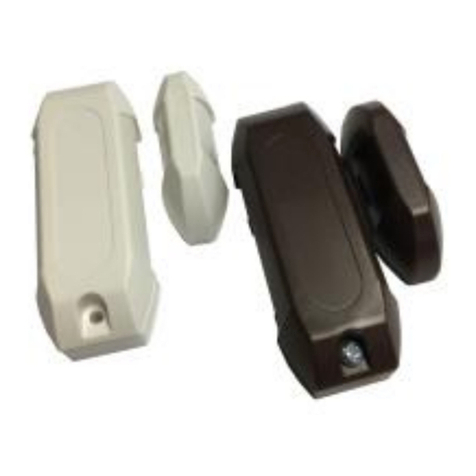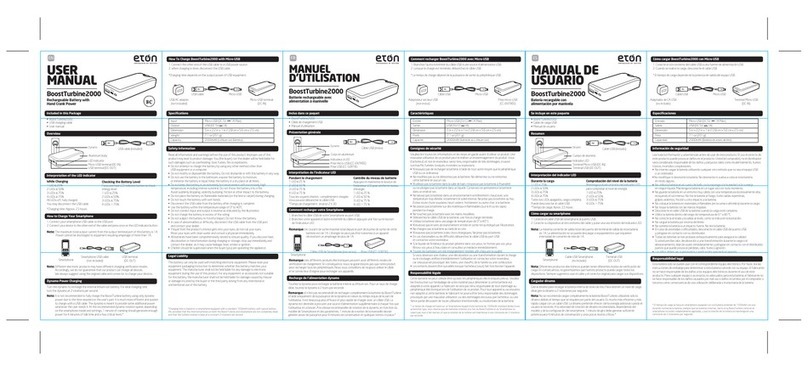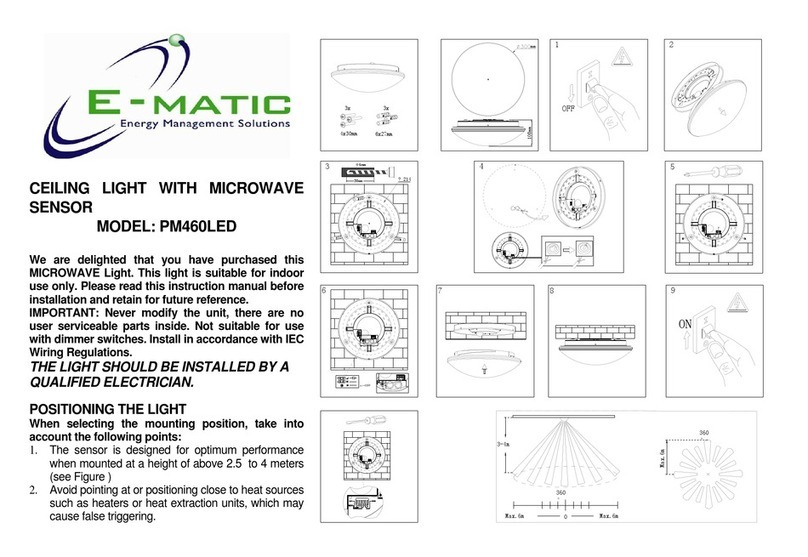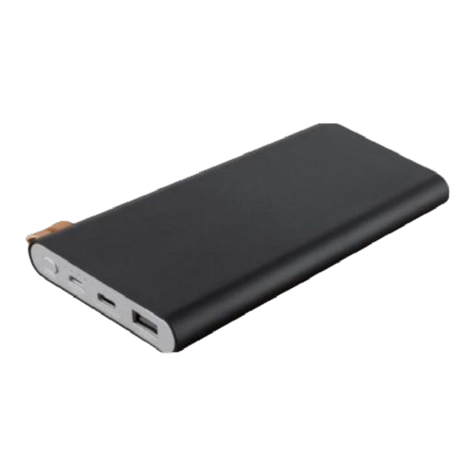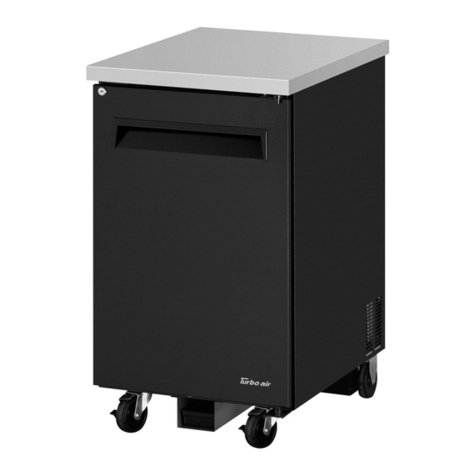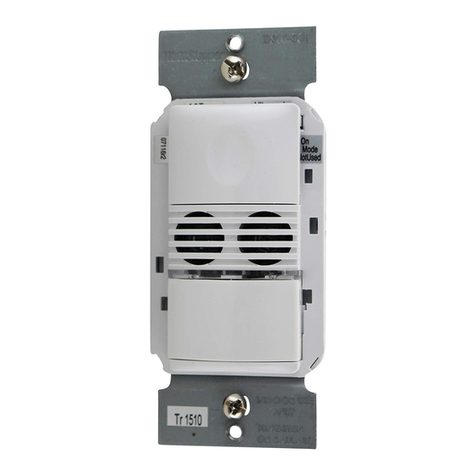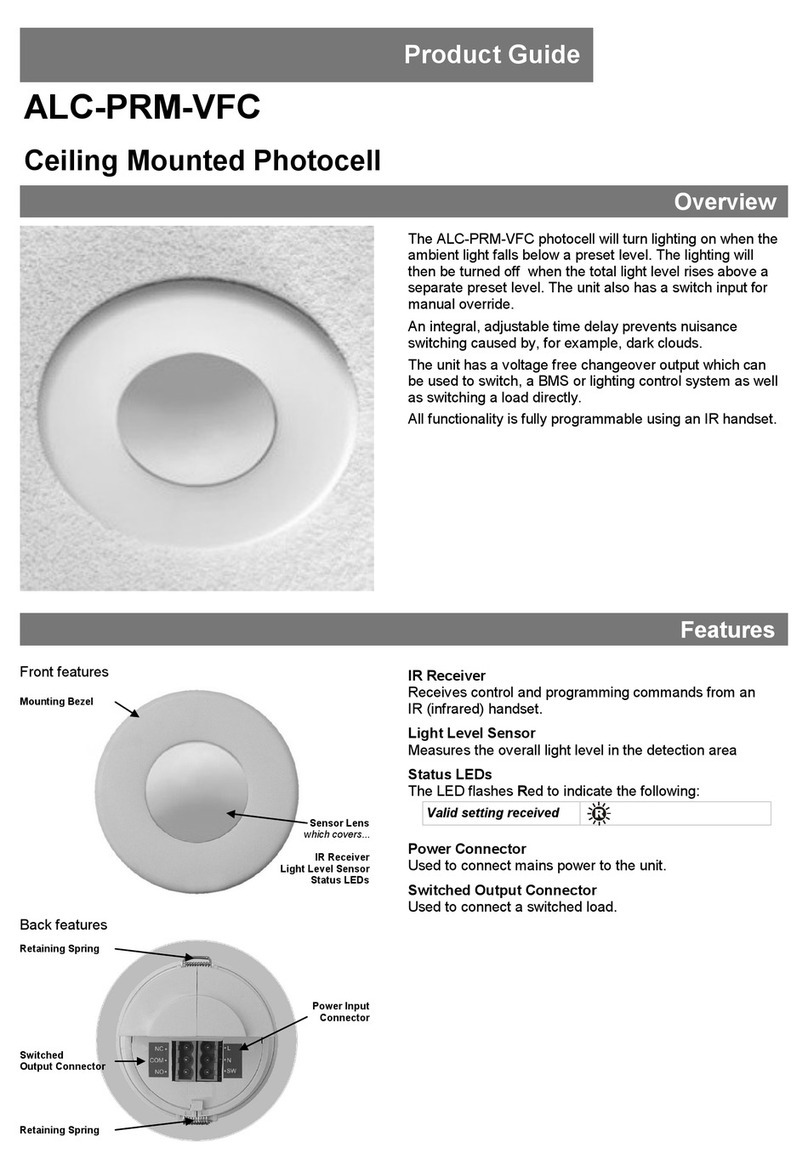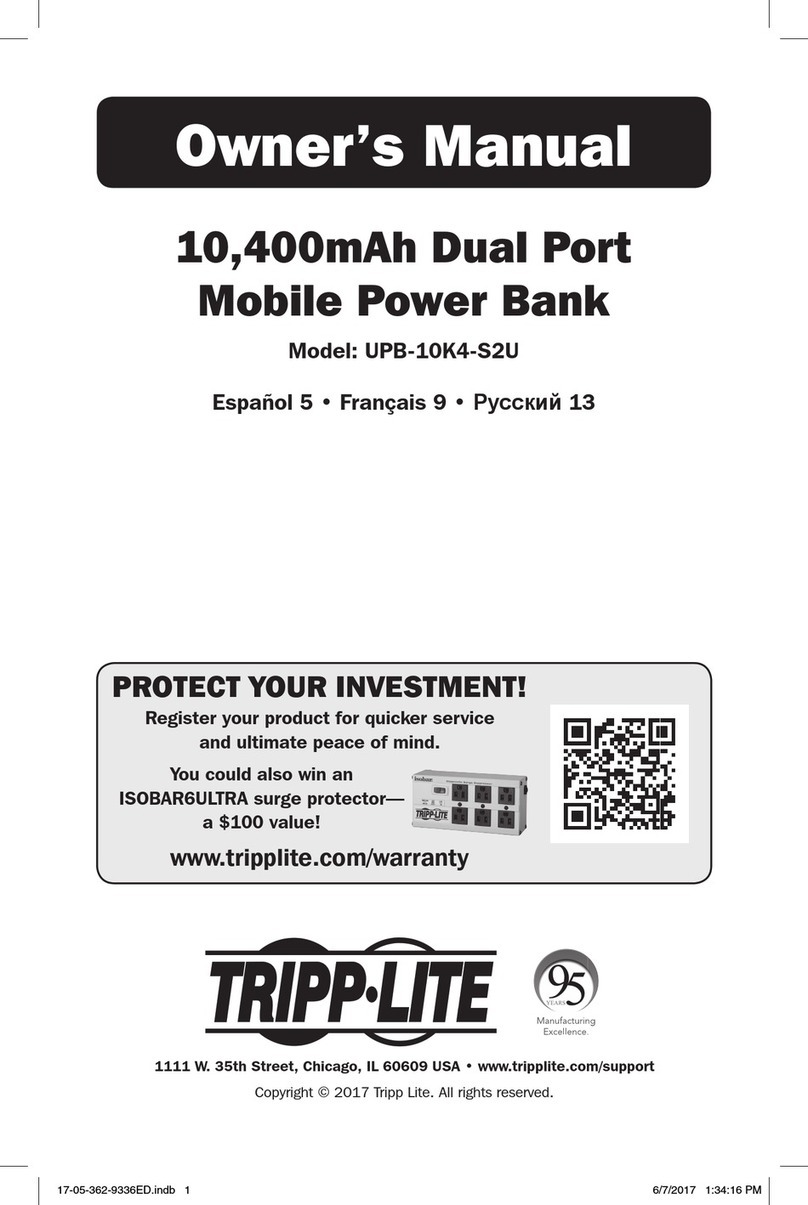General Monitors S4000T User manual

Model S4000T
Intelligent Sensor for
Hydrogen Sulfide Gas Detection
The information and technical data disclosed in
this document may be used and disseminated
only for the purposes and to the extent
specifically authorized in writing by General
Monitors.
Instruction Manual 03-03
General Monitors reserves the right to change
published specifications and designs without
prior notice.
MANS4000T
Part No. MANS4000T
Revision F/03-03

Model S4000T
i
Warranty
General Monitors warrants the Model S4000T to be free from defects in workmanship
or material under normal use and service within two years from the date of shipment.
General Monitors will repair or replace without charge any such equipment found to
be defective during the warranty period. Full determination of the nature of, and
responsibility for, defective or damaged equipment will be made by General Monitors
personnel.
Defective or damaged equipment must be shipped to the General Monitors’ plant or
representative from which the original shipment was made. In all cases this warranty
is limited to the cost of the equipment supplied by General Monitors. The customer
will assume all liability for the misuse of this equipment by its employees or other
personnel.
NOTE - The Model S4000T Intelligent Sensor is easy to install; however, this manual
should be read and understood before attempting to operate the sensor.
All warranties are contingent upon proper use in the application for which the product
was intended and does not cover products which have been modified or repaired
without General Monitors’ approval, or which have been subjected to neglect,
accident, improper installation or application, or on which the original identification
marks have been removed or altered.
Except for the express warranty stated above, General Monitors disclaims all
warranties with regard to the products sold, including all implied warranties of
merchantability and fitness and the express warranties stated herein are in lieu of all
obligations or liabilities on the part of General Monitors for damages including, but not
limited to, consequential damages arising out of, or in connection with, the
performance of the product.
Warning
WARNING - The Model S4000T Intelligent Sensor contains components, which can
be damaged by static electricity. Special care must be taken when wiring the system
to ensure that only the connection points are touched.
WARNING - HYDROGEN SULFIDE (H2S) IS AN EXTREMELY TOXIC GAS, AND
EXPOSURE MAY RESULT IN A LOSS OF CONSCIOUSNESS OR DEATH.

Model S4000T
ii
System Integrity Verification
General Monitors’ mission is to benefit society by providing solutions through
industry-leading safety products, services and systems that save lives and protect
capital resources from the dangers of hazardous flames, gases and vapors.
The safety products you have purchased should be handled carefully and installed,
calibrated and maintained in accordance with the respective product instruction
manual. Remember, these products are for your safety.
To ensure operation at optimum performance, General Monitors recommends that
certain maintenance items are performed.
Commissioning Safety Systems
Before power-up, verify wiring, terminal connections and stability of mounting for all
integral safety equipment including, but not limited to:
•Power supplies
•Control modules
•Field detection devices
•Signaling / output devices
•Accessories connected to field and signaling devices
After the initial application of power (and any factory specified warm-up period) to the
safety system, verify that all signal outputs, to and from devices and modules, are
within the manufacturers’ specifications. Initial calibration / calibration checking /
testing should be performed per the manufacturers’ recommendations and
instructions.
Proper system operation should be verified by performing a full, functional test of all
component devices of the safety system, ensuring that the proper levels of alarming
occur.
Fault/Malfunction circuit operation should be verified.
Periodic Testing/Calibration of Field Devices
Periodic testing/calibrating should be performed per the manufacturers’
recommendations and instructions. Testing/Calibrating procedures should include,
but not be limited to:
•Verify zero reading
•Apply a known concentration of gas, and verify accuracy
•Verify integrity of all optical surfaces and devices
•For flame detectors, use the appropriate test lamp
When testing produces results outside of the manufacturers’ specifications, re-
calibration or repair/replacement of the suspect device(s) should be performed as
necessary. Calibration intervals should be independently established through a

Model S4000T
iii
documented procedure, including a calibration log, maintained by plant personnel or
third party testing services.
Periodic System Verification
The following system verifications should be performed at least annually:
Verify wiring, terminal connections and stability of mounting for all integral safety
equipment including, but not limited to:
•Power supplies
•Control modules
•Field detection devices
•Signaling / output devices
•Accessories connected to field and signaling devices
Proper system operation should be verified by performing a full, functional test of all
component devices of the safety system, ensuring that the proper levels of alarming
occur.
Fault/Malfunction circuit operation should be verified.
Calibration intervals should be independently established through a documented
procedure, including a calibration log maintained by plant personnel or third party
testing services.

Model S4000T
Quick Start Guide
iv
1.0 Quick Start Guide
1.1 Product Location
WARNING - Installation and Maintenance must be carried out by suitably skilled and
competent personnel only.
WARNING - The Model S4000T Intelligent Sensor contains components which can
be damaged by static electricity. Special care must be taken when wiring the system
to ensure that only the connection points are touched.
There are no standard rules for sensor placement since the optimum sensor location
is different for each application. The customer must evaluate conditions at the facility
to make this determination. Generally, the Model S4000T Intelligent Sensor should
be easily accessible for calibration checks.
•The transmitter should be mounted with the sensor pointing down to prevent water
build-up on the sensor head.
•The transmitter should not be placed where it may be coated by contaminating
substances.
•Although the Model S4000T is RFI resistant, it should not be mounted in close
proximity to radio transmitters or similar equipment.
•Locate the Model S4000T where prevailing air currents contain the maximum
concentration of gas.
•Locate the Model S4000T near possible sources of gas leaks.
•Observe the Model S4000T’s temperature specification and locate the unit away
from concentrated sources of heat.
•Transmitters should be mounted in an area that is as free from wind, dust, water,
shock, and vibration as possible. See Section 9.2.4 for the environmental
specifications of the unit. If the sensor can not be located away from dust and rain,
we recommend the use of our splash guard (GM P/N 10395-1) to help protect the
sensor.
1.1.1 Sensor Poisons and Contaminants
Sensors may be adversely affected by prolonged exposure to certain materials. Loss
of sensitivity or corrosion may be gradual if such materials are present in low
concentrations, or it may be rapid at high concentrations. The more important
materials adversely affecting sensors are:
•Silicones (often contained in greases and aerosols)
•Halides: compounds containing Fluorine, Chlorine, Bromine and Iodine
•Heavy metals, e.g. Tetraethyl Lead
•Caustic and Acidic liquids and vapors
•Glycol
The presence of contaminants in an area does not necessarily preclude the use of a
Model S4000T Intelligent Sensor. The feasibility of using a sensor in such areas must
be determined by an analysis of the specific factors in each application, and General
Monitors should be consulted before attempting any such installation.

Model S4000T
Quick Start Guide
v
Sensors used in these areas usually require more frequent calibration checks than
normal, and typically have a shorter life. In many such applications the standard two
year warranty would not apply.
IMPORTANT: Each H2S Sensor is shipped with a red plastic cap fitted over the
sensor head. Inside the cap is a dessicant. DO NOT remove this cap until you
have applied power to the sensors. SAVE the cap and RE-CAP the sensor
anytime the system power is off for more than one hour.
WARNING - General Monitors discourages the painting of sensor assemblies. If the
sensor head is painted over, the gas will not be able to diffuse into the sensor. If the
assembly cover is painted over, the digital display cannot be read.
1.1.2 Remote mounting of the Sensor from the Electronics
If it is necessary to remotely mount the sensor from the electronics and the housing,
the maximum distance can be no greater than 3375 feet (1029) meters, using 14
AWG wire. Sensors that are remotely mounted, must be placed in an explosion-proof
rated sensor housing (GM P/N 10252), and the cable run must be contained in
conduit running from the sensor housing to the electronics. See Section 9.5, for
FMRC approval requirements.
1.2 Mounting and Wiring
1.2.1 Tools Required
1. “5mm” Allen head wrench to remove enclosure lid (included with gas detector).
2. Flat-head screwdriver maximum 3/16” (5 mm) width for terminal block connections
(included with gas detector).
3. Adjustable wrench for conduit or cable gland connections (not included).
WARNING - The conduit entries should be sealed per the NEC 500-3d, or Canadian
Electrical Code Handbook (Part 1, Section 18-154). Additional benefit of conduit
seals is the prevention of water entering the housing through the conduit entry.
WARNING - Unused cable entry holes must be sealed with an approved explosion-
proof plug. Red caps supplied by GM are for dust protection only and must not be
left on the unit when installed.
The overall and mounting dimensions for the Model S4000T (Figure 1) should be
used when making installation determinations. A complete list of the mechanical
specifications can be found in Section 9.2.2.
To prevent possible corrosion due to moisture or condensation, it is recommended
that the conduit connected to the Model S4000T housing be sealed or contain a drain
loop.
Each conduit run from a hazardous location to a non-hazardous location should be
sealed so that gases, vapors, and/or flames cannot pass beyond the seal. The
purpose of seals in a Class I hazardous location is to prevent the passage of gases,

Model S4000T
Quick Start Guide
vi
vapors, or flames from one electrical installation to another, through the conduit
system. It is not necessary to seal the Model S4000T housing to maintain its
explosion-proof integrity; however, conduit runs containing wires attached to the
Model S4000T’s relay contacts must be sealed (see Section 3.5).
Information on Class I location seals can be found in the NEC, Article 501-5.
WARNING - Acetic acid will cause damage to metal components, metal hardware,
ceramic IC’s, etc. If damage results from the use of a sealant that outgases acetic
acid (RTV silicone), the warranty will be void.
Figure 1 S4000T Outline and Mounting Dimensions
Once correctly installed, the Model S4000T requires little or no maintenance, other
than periodic calibration checks to ensure system integrity. General Monitors
recommends that a schedule be established and followed.
NOTE - The system’s full two-year warranty will be voided if customer personnel or
third parties damage the system during repair attempts.
Sensor heads exposed to the elements may require lubrication of the mounting
threads. Grease must not be used. As an alternative, PTFE (teflon) tape may be
used.
NOTE - Do not use any material or substance on threads that contact the sensor
housing.
The removal of particulate matter from sensor accessories may be done through the
use of an appropriate halogen-free solvent. Water or ethanol are examples of
suitable solvents. The accessories should be thoroughly dried, with compressed air if
necessary, before refitting to the sensor body.

Model S4000T
Quick Start Guide
vii
1.3 Terminal Connections
The terminal blocks (TB) are located inside the housing and can by accessed by
removing the cover. A label on the inside of the housing cover provides details of all
the terminal connections.
1.3.1 Terminal Block TB1 – Sensor Connections
TB1 contains the four sensor connections, white (W), black (B), red (R) and green
(G). Remove the display board by loosening the two captive screws on the board and
lifting it straight up. Connect the color-coded wires from the sensor to the matching
colored terminals on TB1. The label on the inside of the cover can serve as a guide.
Replace the display board, by pressing it into place, and tightening the two captive
screws.
WARNING - Do not connect +24VDC to TB1. Damage to the electronics or sensor
may result.
1.3.2 Terminal Block TB2 – Power and Signal Connections
TB2 contains the connections for Power, Relay Reset, Remote Calibration, Modbus
and 0-20mA Output Signal. The terminal connections are as follows:
TB2 position Function
1 0-20mA Output
2 CH1 Modbus -
3 CH1 Modbus +
4 CH2 Modbus -
5 CH2 Modbus +
6 Remote Calibration
7 Relay Reset
8 Ground
9 +24VDC Power
Figure 2 Power and Signal Connections
It is recommended that a shielded cable be used for making power and output signal
connections on the Model S4000T. The terminal block accepts 14 AWG to 20 AWG
stranded or solid wire. Each wire should be stripped before wiring the Model S4000T
Intelligent Sensor. To connect wiring to the terminal block, insert a screwdriver into
the orange tab and press down (Figure 3), opening the terminal. Insert the wire into
the terminal and release the orange tab, clamping the wire in the terminal. Check the
hold of the wire by GENTLY tugging it to ensure it is locked in.

Model S4000T
Quick Start Guide
viii
Figure 3 Terminal Block Operation Figure 4 Wire Strip Length
NOTE - Up to 14 AWG wire can be used if it is carefully stripped (Figure 4).
1.3.3 DC Power and Ground Connections
Primary DC power must be provided by the customer, unless one of the following
General Monitors Modules is being used with the Model S4000T:
•DT210 Eight-Channel Readout/Relay Display Module with Power Supply & Relay
Module
•DT230 Dual-Channel Readout/Relay Display Module
•TA202A Trip Amplifier Module with a PS002
The following General Monitors Modules provide power connections for the Model
S4000T, but need a customer supplied DC source:
•DT210 Eight-Channel Readout/Relay Display Module without a Power Supply &
Relay Module
•DT220 Dual-Channel Display Module
•TA202A Trip Amplifier Module without a PS002
Since the Model S4000T is designed to operate continuously, a power switch is not
included, in order to prevent accidental system shutdown.
NOTE - Power must remain disconnected until all other wiring connections have
been made.
The maximum distance between the Model S4000T and the power supply is 2000
feet or 610 meters (each cable run should be as short as possible). See Section 9.2.3
for cable length specifications. Connect +24VDC to TB2, position 9. Connect the
ground or common wire to TB2, position 8. For making power and ground
connections to display devices see Figures 5 and 6.

Model S4000T
Quick Start Guide
ix
FROM TO
Model
S4000T
Model
DT210
Model
DT230
Model
TA202A
TB2-8
“COM”
Rear
COMMON
Rear
Pin 3 or 6
“COM”
Rear
Pin 30d or
30z
Figure 5 Ground or Common Connections
FROM TO
Model
S4000T
Model
DT210
Model
DT230
Model
TA202A
TB2-9
“+24
VDC”
Rear
CH 1 – 8
24V
Rear
Pin 4 or 7
“DC OUT”
Rear
Pin 28d or
28z
Figure 6 Power Connections
1.3.4 Analog Signal Connections
A 4 to 20mA output signal is provided by the Model S4000T Intelligent Transmitter.
This signal can be sent up to 9000 feet (2740 meters) using 14 AWG wire to:
•A General Monitors readout/relay display module, or
•An industrial analog to digital converter, or
•A computer-based monitor,
•A PLC, or
•A DCS.
To connect the 4 to 20mA output signal with another unit, connect the wire into TB2,
position 1, labeled “4-20mA”. For making output signal connections to display
devices, refer to the specific manual for that device (Figure 7).
FROM TO
Model
S4000T
Model
DT210
Model
DT220
Model
DT230
Model
TA202A
TB2-1
4-20mA
Output
Rear
CH 1 – 8
4-20mA
Rear
TB1
Pin 8 or 9
Rear
Pin 2 or 5
Analog In
Rear
Pin 26d
or 26z
Figure 7 Analog Signal Connections
If a device other than a General Monitors readout/relay display module is being
used, the DC ground, COM, of both systems must be connected together.

Model S4000T
Quick Start Guide
x
1.3.5 Terminal Block TB3 – Relay Connections
TB3 contains the connections for the Relay Contacts (optional). The function for the
Warn and Alarm Relay connections vary, according to the normal state of the relay.
Use the following as a guide for determining the Normally Open (NO) and the
Normally Closed (NC) contact:
TB3 position Relay Contact (De-Energized) Relay Contact (Energized)
1 Normally Closed Normally Open
2 Common Common
3 Normally Open Normally Closed
Figure 8 Alarm Relay Connections
TB3 position Relay Contact (De-Energized) Relay Contact (Energized)
4 Normally Closed Normally Open
5 Common Common
6 Normally Open Normally Closed
Figure 9 Warn Relay Connections
TB3 position Relay Contact (Energized)
7 Normally Open
8 Common
9 Normally Closed
Figure 10 Fault Relay* Connections
*NOTE - Fault relay is normally energized. Relay will change states after power up.
WARNING - Contact with PCB components should be avoided to prevent damage
by static electricity. All wire connections are made to the Terminal Blocks.
WARNING - Relay contacts must be protected against transient and over voltage
conditions (see below).
Figure 11 Relay Protection for DC and AC Loads

Model S4000T
Quick Start Guide
xi
North American Approved Applications - The ALARM relay contact ratings are 8A @
250 VAC and 8A @ 30 VDC resistive max.
European Union (EU) Approved Applications - The ALARM relay contact ratings are
8A, 30 V RMS/42.4 V peak or 8A @ 30 VDC resistive max.
1.3.6 European Union (EU) Approved Applications
Interconnecting cables must have an overall screen, or screen and armor. Cables
BS5308 Part 2, Type 2, or equivalent are suitable. Note that the terms ‘screen’ and
‘shield’ are equivalent for the purpose of this manual. The cable armor must be
terminated in a suitable cable gland at the detector to ensure a positive electrical
connection.
1.3.7 Cable termination in the non-hazardous area
•The cable armor must be connected to safety earth in the safe area.
•The cable screen (drain wire) must be connected to an instrument earth in the
safe area.
•The power supply OV return must be connected to an instrument earth in the
safe area.
•The interconnecting cables should be segregated from power and other noisy
cables. Avoid proximity to cables associated with radio transmitters, welders, switch
mode power supplies, inverters, battery chargers, ignition systems, generators,
switch gear, arc lights and other high frequency or high power switching process
equipment. In general, maintain separation of at least 1 m between instrument and
other cables. Greater separations are required where long parallel cable runs are
unavoidable. Avoid running instrument cable trenches close to lightning conductor
earthing pits.
•Complete all cable insulation testing before connecting the cable at either end.
WARNING - Under NO circumstances should equipment be connected or
disconnected when under power. This is contrary to hazardous area regulations and
may lead to serious damage to the equipment. Equipment damaged in this manner
is not covered under warranty.

Model S4000T
Quick Start Guide
xii
NOTE - The instrument is now ready to operate! Please consult the manual for more
information on the instrument’s many features.
NOTE - If you have any problems in the set-up or testing of the detector, please refer
to the “Trouble Shooting Section”, or call the factory direct.
Worldwide Service is available by calling:
Lake Forest, California Phone: +1-949-581-4464
(24 hr. service) Fax: +1-949-581-1151
Houston, Texas Phone: +1-281-855-6000
Fax: +1-281-855-3290
Ireland Phone: +353-91-751175
Fax: +353-91-751317
Singapore Phone: +65-6748-3488
Fax: +65-6748-1911
United Arab Emirates Phone: +971-4-8815751
Fax: +971-4-8817927
United Kingdom Phone: +44-1625-619-583
Fax: +44-1625-619-098

Model S4000T
xiii
Table of Contents
Warning ................................................................................... i
System Integrity Verification .................................................................................. ii
1.0 Quick Start Guide ................................................................................. iv
1.1 Product Location.................................................................................iv
1.1.1 Sensor Poisons and Contaminants.......................................iv
1.1.2 Remote mounting of the Sensor from the Electronics........... v
1.2 Mounting and Wiring .......................................................................... v
1.2.1 Tools Required ...................................................................... v
1.3 Terminal Connections .......................................................................vii
1.3.1 Terminal Block TB1 – Sensor Connections .........................vii
1.3.2 Terminal Block TB2 – Power and Signal Connections ........vii
1.3.3 DC Power and Ground Connections...................................viii
1.3.4 Analog Signal Connections ...................................................ix
1.3.5 Terminal Block TB3 – Relay Connections............................. x
1.3.6 European Union (EU) Approved Applications .......................xi
Table of Contents ............................................................................... xiii
Table of Figures .............................................................................. xvii
2.0 Introduction .................................................................................. 1
2.1 General Description............................................................................ 1
3.0 Installation .................................................................................. 2
3.1 Receipt of Equipment ......................................................................... 3
3.2 Tools Required .................................................................................. 3
3.3 Choosing Product Locations .............................................................. 4
3.3.1 Remote mounting of the Sensor from the Electronics........... 5
3.4 Mounting and Wiring .......................................................................... 6
3.5 Terminal Connections ........................................................................ 8
3.5.1 Terminal Block TB1 – Sensor Connections .......................... 8
3.5.2 Terminal Block TB2 – Power and Signal Connections ......... 8
3.5.3 DC Power and Ground Connections..................................... 9
3.5.4 Analog Signal Connections ................................................. 10
3.5.5 Terminal Block TB3 – Relay Connections........................... 11
3.5.6 European Union (EU) Approved Applications ..................... 12
3.5.7 Cable termination in the non-hazardous area ..................... 12
3.6 Maintaining the X/P Integrity ............................................................ 13

Model S4000T
xiv
4.0 Operation ................................................................................ 15
4.1 Start-Up Checklist............................................................................. 15
4.2 Start-Up ................................................................................ 15
4.3 Relay Reset ................................................................................ 15
4.4 User Selectable Options................................................................... 16
4.4.1 Model S4000T User Menu Structure................................... 17
4.4.2 Sensor Range...................................................................... 17
4.4.3 Warning Relay Settings....................................................... 18
4.4.4 Alarm Relay Settings........................................................... 18
4.4.5 Modbus Channel 1 Settings ................................................ 19
4.4.6 Modbus Channel 2 Settings ................................................ 19
4.5 Gas Check Mode.............................................................................. 20
4.5.1 Procedure for Checking the Calibration: ............................. 20
4.6 Calibration ................................................................................ 21
4.6.1 Calibration Procedure.......................................................... 21
4.6.2 Aborting Calibration............................................................. 22
4.6.3 Remaining Sensor Life ........................................................ 22
4.6.4 Initializing the Remaining Sensor Life ................................. 22
4.7 Calibration Equipment ...................................................................... 23
4.7.1 Breaker Bottles and Ampoules............................................ 23
4.7.2 H2S Portable Purge Calibrator ............................................ 23
5.0 Maintenance ................................................................................ 24
5.1 General Maintenance ....................................................................... 24
5.2 Storage ................................................................................ 24
6.0 Troubleshooting ................................................................................ 25
6.1 Fault Codes & Their Remedies ........................................................ 25
6.1.1 F2 - Failed to Complete the Calibration .............................. 25
6.1.2 F3 - EPROM Checksum Error............................................. 25
6.1.3 F4 - Sensor Heater Open Error ........................................... 25
6.1.4 F5 - Sensor Heater Shorted Error ....................................... 25
6.1.5 F6 - Low Supply Voltage ..................................................... 25
6.1.6 F7 - EEPROM Verification Failure....................................... 26
6.1.7 F8 - Failure to Complete Setup ........................................... 26
6.1.8 F9 - Gas Check Period Exceeded....................................... 26
6.1.9 F10 – Switch Error............................................................... 26
7.0 Customer Support ................................................................................ 27
7.1 General Monitors’ Offices................................................................. 27

Model S4000T
xv
8.0 MODBUS Interface ................................................................................ 29
8.1 Baud Rate ................................................................................ 29
8.2 Data Format ................................................................................ 29
8.3 Modbus Read Status Protocol (Query/Response) ........................... 29
8.3.1 Modbus Read Query Message............................................ 29
8.3.2 Modbus Read Response Message ..................................... 30
8.4 Modbus Write Command Protocol (Query/Response)..................... 30
8.4.1 Modbus Write Query Message............................................ 30
8.4.2 Modbus Write Response Message ..................................... 30
8.5 Function Codes Supported............................................................... 30
8.6 Exception Responses and Exception Codes ................................... 31
8.6.1 Exception Response ........................................................... 31
8.6.2 Exception Code ................................................................... 31
8.7 S4000T Command Register Locations ............................................ 33
8.8 S4000T Command Register Details................................................. 34
8.8.1 Analog ................................................................................ 34
8.8.2 Mode ................................................................................ 34
8.8.3 Status/Error ......................................................................... 35
8.8.4 Unit Type ............................................................................. 35
8.8.5 Software Revision ............................................................... 35
8.8.6 Status Block......................................................................... 35
8.8.7 Alarm Settings ..................................................................... 35
8.8.8 Warn Settings ...................................................................... 36
8.8.9 Com1 Address..................................................................... 36
8.8.10 Com1 Baud Rate ................................................................. 37
8.8.11 Com1 Data Format.............................................................. 37
8.8.12 Com2 Address..................................................................... 37
8.8.13 Com2 Baud Rate ................................................................. 37
8.8.14 Com2 Data Format.............................................................. 38
8.8.15 Reset Alarms ....................................................................... 38
8.8.16 Sensor Life .......................................................................... 38
8.8.17 Sensor Scale ....................................................................... 38
8.8.18 Total Receive Errors............................................................ 38
8.8.19 Bus Activity Rate % ............................................................. 38
8.8.20 Function Code Errors .......................................................... 38
8.8.21 Starting Address Errors ....................................................... 39
8.8.22 Number of Register Errors .................................................. 39
8.8.23 RXD CRC Hi Errors............................................................. 39
8.8.24 RXD CRC Low Errors.......................................................... 39
8.8.25 Clear Comm Errors ............................................................. 39

Model S4000T
xvi
9.0 Appendix ................................................................................ 41
9.1 Principle of Operation....................................................................... 41
9.2 Specifications ................................................................................ 41
9.2.1 System Specifications ......................................................... 41
9.2.2 Mechanical Specifications ................................................... 42
9.2.3 Electrical Specifications....................................................... 42
9.2.4 Environmental Specifications .............................................. 43
9.3 Approvals ................................................................................ 43
9.4 Spare Parts and Accessories ........................................................... 43
9.4.1 Sensors ............................................................................... 44
9.4.2 Sensor Housing................................................................... 44
9.4.3 Sensor Accessories............................................................. 44
9.4.4 Calibration Equipment ......................................................... 44
9.4.5 Intelligent Sensor (S4000T) Replacement Parts................. 45
9.4.6 Recommended Spare Parts for One (1) Year..................... 45
9.5 FMRC Approval45

Model S4000T
xvii
Table of Figures
Figure 1 S4000T Outline and Mounting Dimensions....................................... vi
Figure 2 Power and Signal Connections .........................................................vii
Figure 3 Terminal Block Operation.................................................................viii
Figure 4 Wire Strip Length..............................................................................viii
Figure 5 Ground or Common Connections...................................................... ix
Figure 6 Power Connections ........................................................................... ix
Figure 7 Analog Signal Connections ............................................................... ix
Figure 8 Alarm Relay Connections................................................................... x
Figure 9 Warn Relay Connections.................................................................... x
Figure 10 Fault Relay* Connections................................................................... x
Figure 11 Relay Protection for DC and AC Loads.............................................. x
Figure 12 Model S4000T Intelligent Sensor ....................................................... 1
Figure 13 S4000T Outline and Mounting Dimensions........................................ 6
Figure 14 TB2 Power and Signal Connections................................................... 8
Figure 15 Terminal Block Operation................................................................... 6
Figure 16 Wire Strip Length................................................................................ 9
Figure 17 Ground or Common Connections..................................................... 10
Figure 18 Power Connections .......................................................................... 10
Figure 19 Analog Signal Connections .............................................................. 11
Figure 20 Alarm Relay Connections.................................................................11
Figure 21 Warn Relay Connections.................................................................. 11
Figure 22 Fault Relay* Connections.................................................................11
Figure 23 Relay Protection for DC and AC Loads............................................ 12
Figure 24 Relay Reset ...................................................................................... 16
Figure 25 User Menu Structure ........................................................................ 17
Figure 26 Gas Check........................................................................................ 20
Figure 27 Automatic Calibration Mode ............................................................. 21
Figure 28 Calibration in Progress Mode ........................................................... 21
Figure 29 Calibration Complete Mode..............................................................22
Figure 30 Data Format...................................................................................... 29
Figure 31 Command Register Locations .......................................................... 33
Figure 31 Command Register Locations, Cont. ............................................... 34
Figure 32 Com1 Baud Rate .............................................................................. 37
Figure 33 Com1 Data Format ........................................................................... 37
Figure 34 Com2 Baud Rate .............................................................................. 37
Figure 35 Com2 Data Format ........................................................................... 38
Figure 36 Sensor Scale .................................................................................... 38
Figure 37 24VDC Cable Lengths...................................................................... 42
Figure 38 Analog Output Cable Lengths .......................................................... 42
Figure 39 Sensor Cable Lengths......................................................................43

Model S4000T
1
2.0 Introduction
2.1 General Description
The Model S4000T is an Intelligent Sensor for the detection of Hydrogen Sulfide
(H2S) gas. The microprocessor-based electronics process information at the sensor
site, within an explosion-proof housing.
A digital display provides indications and display codes that can be viewed through a
window in the cover. A red LED above the digital display signifies an ALARM
condition, while a red LED below the digital display signifies a WARN condition.
Analog signal (4-20mA) optional Dual Redundant Modbus communications and
relays, provide remote and/or discrete indications of the sensor’s operation.
The model S4000T Intelligent Sensor is rated explosion-proof for use in the following
hazardous areas:
•CSA/FM: Class I, Division 1, Groups B, C, D and Class I, Zone 1, Ex d IIB+H2, T6
and
•CENELEC: EEx d IIB, T5 and T6
Figure 12 Model S4000T Intelligent Sensor

Model S4000T
2
This page left intentionally blank
Table of contents
Other General Monitors Accessories manuals
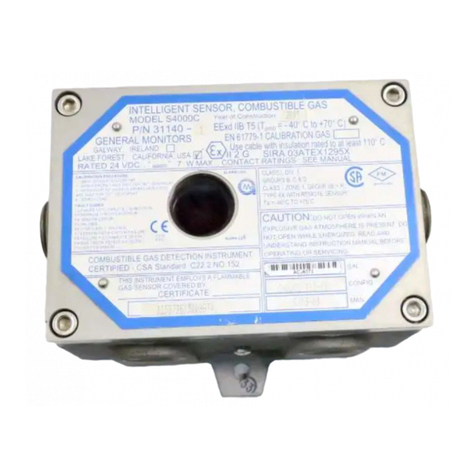
General Monitors
General Monitors S4000C User manual
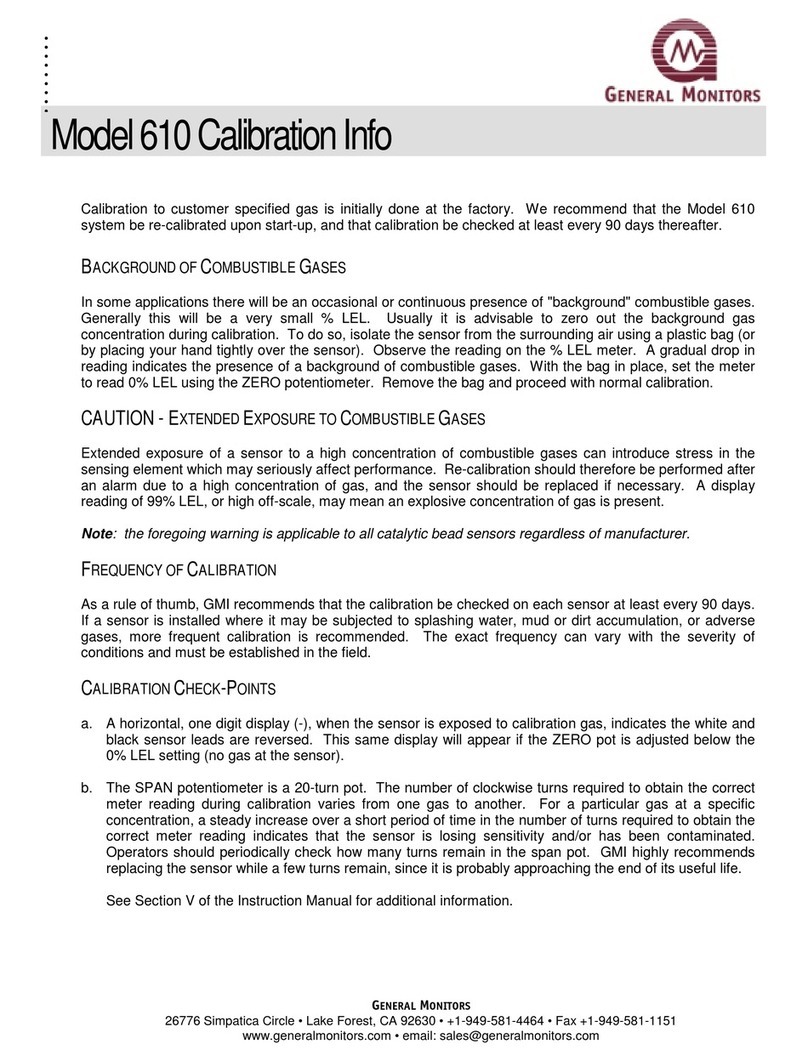
General Monitors
General Monitors 610 Use and care manual

General Monitors
General Monitors S216A User manual
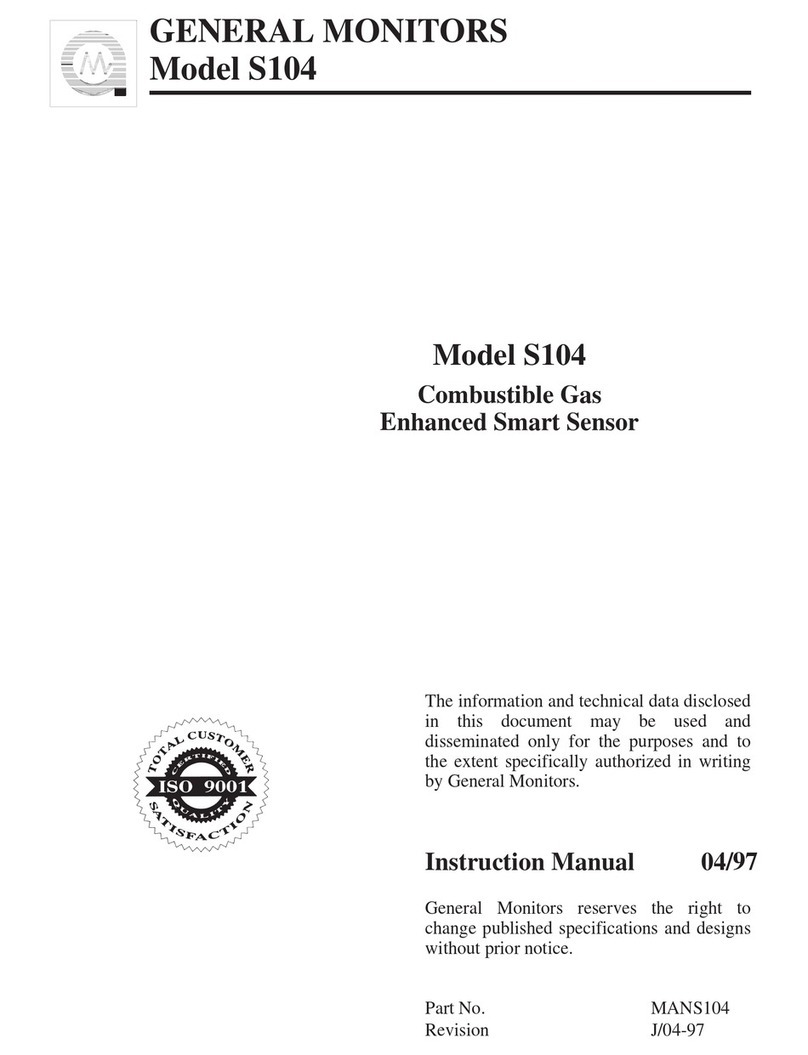
General Monitors
General Monitors S104 User manual
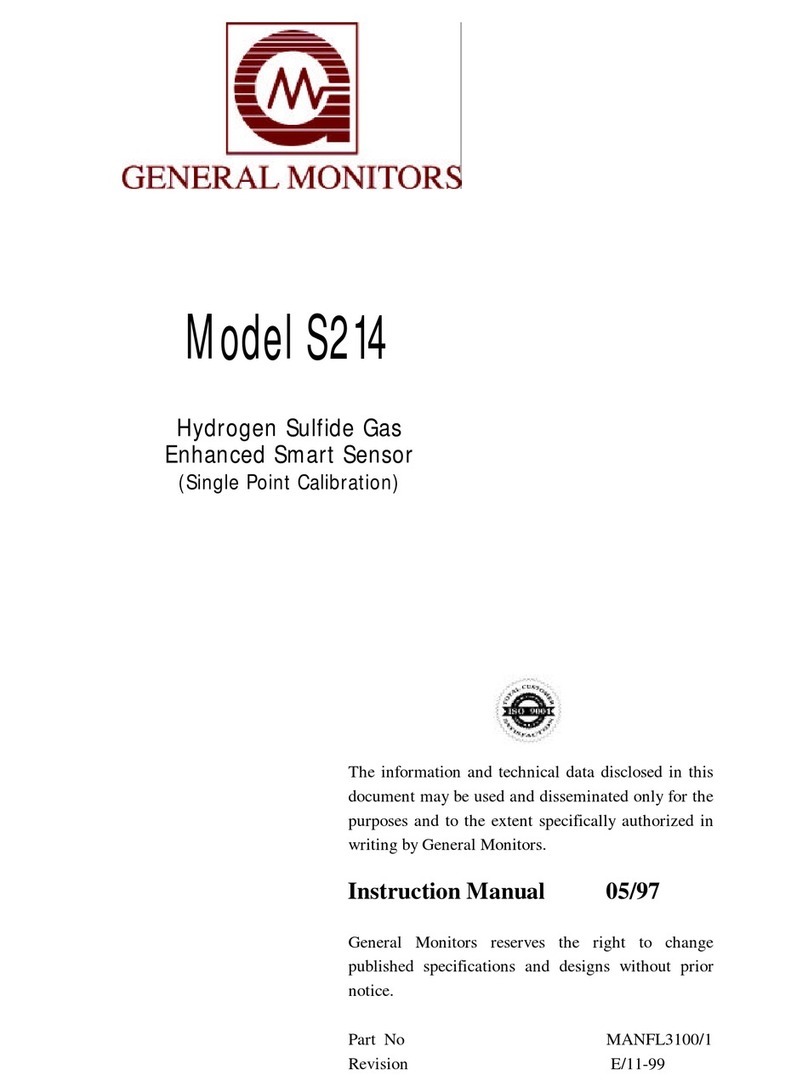
General Monitors
General Monitors S214 User manual
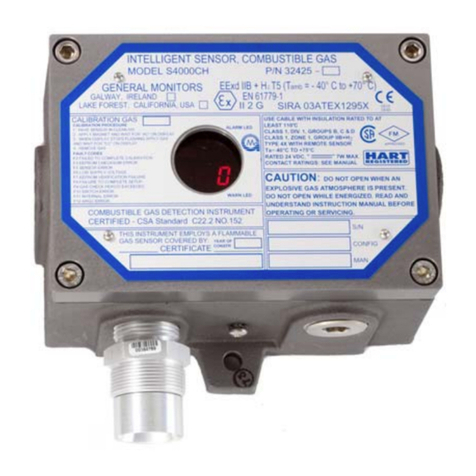
General Monitors
General Monitors S4000CH User manual
Popular Accessories manuals by other brands
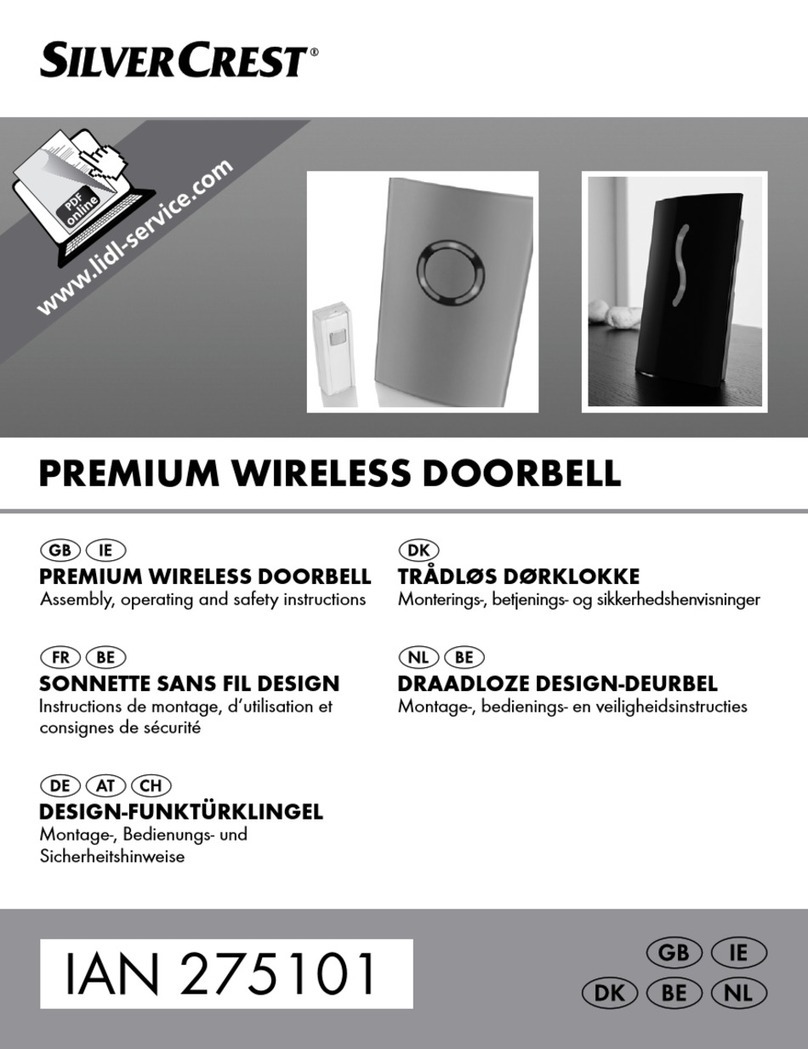
Silvercrest
Silvercrest HG00783A Assembly, operating and safety instructions

Silvercrest
Silvercrest POWER BANK Operation and safety notes

ECA
ECA Interface I TT installation instructions

KROHNE
KROHNE OPTIFLUX 6000 Handbook
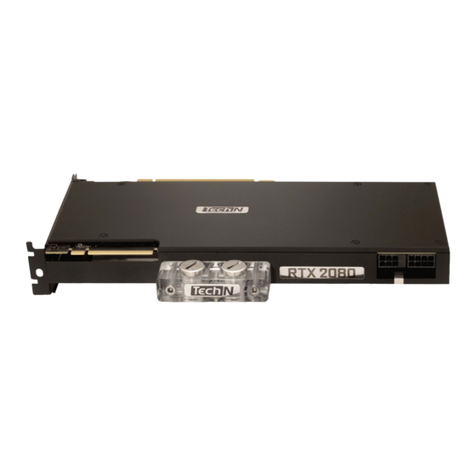
Tech N
Tech N RTX 2080 user manual
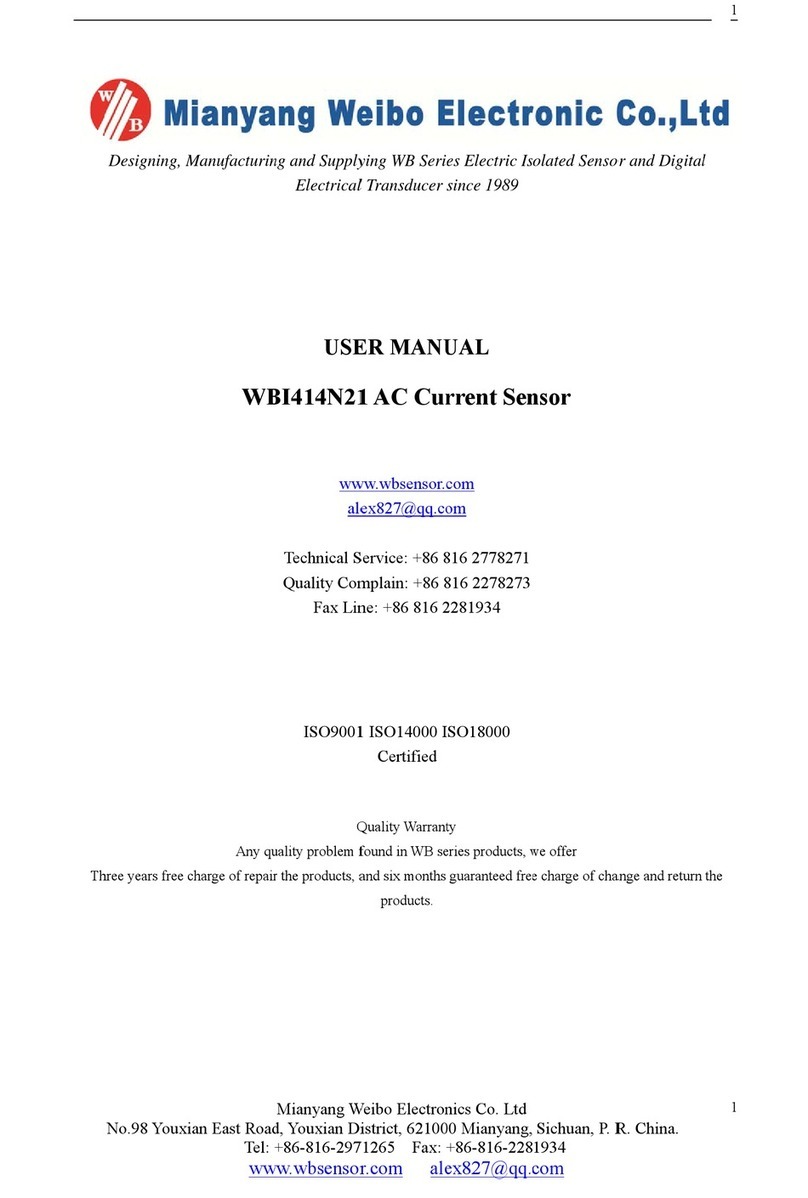
Mianyang Weibo Electronic
Mianyang Weibo Electronic WBI414N21 user manual

